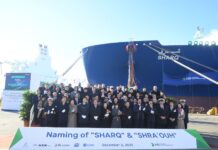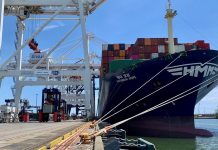
Pacific International Lines (PIL) boss Teo Siong Seng has admitted on 23 March 2020 that the company is in talks with several creditors, including itself, to settle arrears, amid challenging conditions caused by Covid-19.
Teo made the revelation through his other company, Singamas Container Holdings, via a filing to the Hong Kong Stock Exchange.
Singamas, a container manufacturer and depot operator itself is owed over US$147 million from the financially pressured PIL, a Singapore-based liner operator.
The disclosure was made as the Hong Kong-listed Singamas warned of a loss of at least US$105 million for 2019, including a US$10 million credit loss resulting from overdue receivables from PIL.
Singamas said, “The company understands that the PIL group is discussing with its other creditors for similar arrangements amid the challenging market conditions and recent global impact by COVID-19, the discussion is progressing well with good supports from the creditors.”
In May 2019, Singamas sold five of its Chinese container entities to a COSCO unit for US$565 million, explaining that the move enabled the company to concentrate on its logistics services and generated cash.
In the same month, reports surfaced that Singapore’s sovereign wealth fund, Temasek Holdings, had extended loans to PIL in 2018.That was an early sign that PIL was struggling.
On 14 February 2020, PIL announced that it was leaving the trans-Pacific trade, focusing on its regional services.
In early March, Container News uncovered that PIL sold off several ships to boost its balance sheet.
On 13 March 2020, PIL sold one of its subsidiaries, Pacific Direct Line, to Neptune Pacific Line.
Amid weak freight rates, PIL’s loss widened to US$203.32 million in 2018, from US$141.18 million in 2017, becoming one of the most under-performing liner operators.
As at 31 December 2018, PIL had US$1.12 billion of long-term debt, which could still be covered by US$1.69 billion of equity.
In 2013 and 2015, PIL ordered 24 newbuildings (twelve 3,900TEU units and twelve 11,800TEU units) to expand its presence in the Asia-West Africa and Asia-South America segments, respectively. Bonds were issued to help finance the newbuildings.
Martina Li
Asia Correspondent





